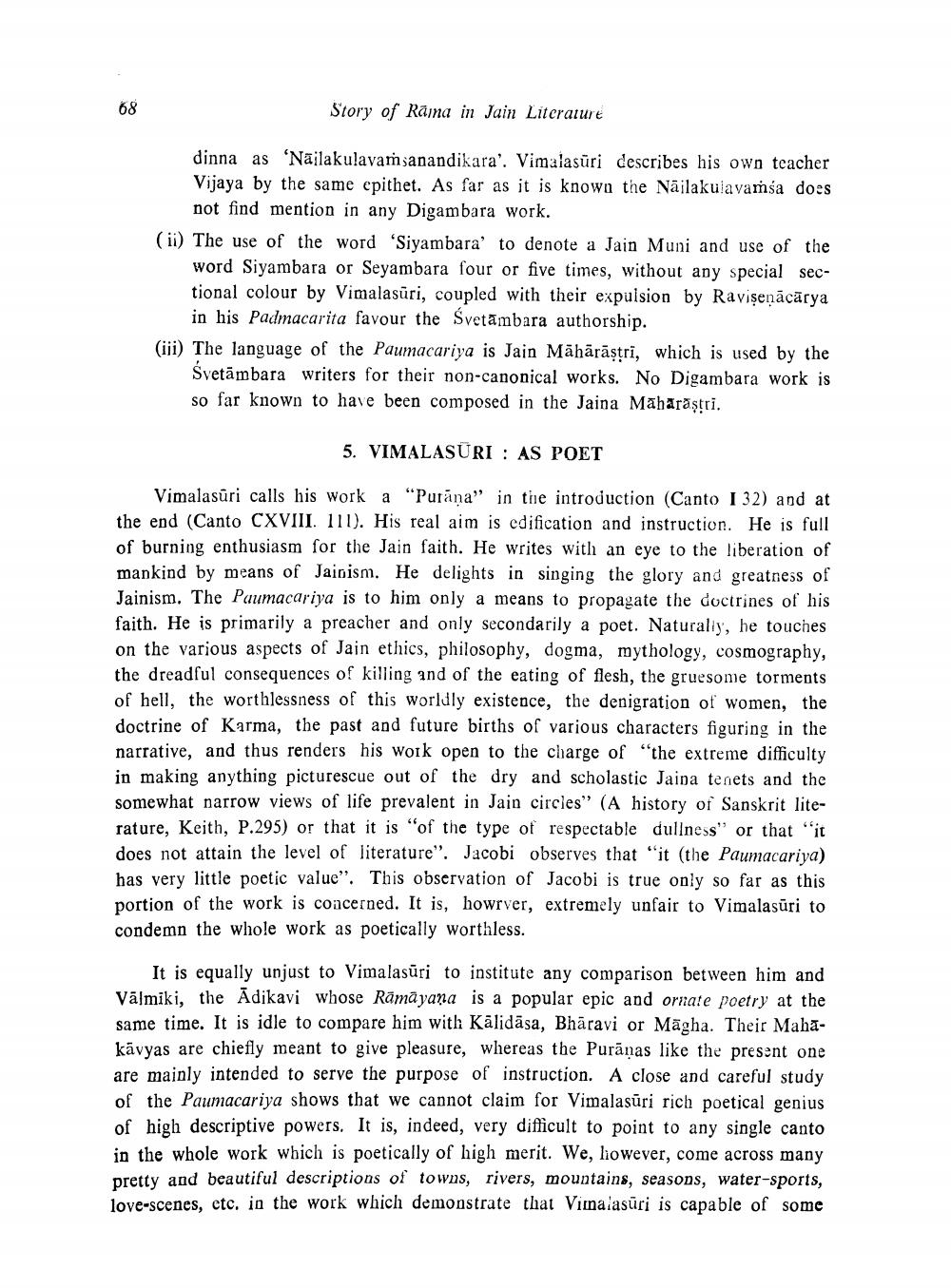________________
Story of Rama in Jain Literature
dinna as 'Nājlakulavam anandikara'. Vimalasūri describes his own teacher Vijaya by the same epithet. As far as it is known the Nāilakulavaṁsa does
not find mention in any Digambara work. (ii) The use of the word 'Siyambara' to denote a Jain Muni and use of the
word Siyambara or Seyambara four or five times, without any special sectional colour by Vimalasūri, coupled with their expulsion by Ravişenācārya
in his Padmacarita favour the Svetambara authorship. (iii) The language of the Paumacariya is Jain Māhārāștri, which is used by the
Svetāmbara writers for their non-canonical works. No Digambara work is so far known to have been composed in the Jaina Māhārāştri.
5. VIMALASŪRI : AS POET
Vimalasuri calls his work a "Purāņa" in the introduction (Canto 1 32) and at the end (Canto CXVIII. 111). His real aim is edification and instruction. He is full of burning enthusiasm for the Jain faith. He writes with an eye to the liberation of mankind by means of Jaioism. He delights in singing the glory and greatness of Jainism. The Paumacariya is to him only a means to propagate the doctrines of his faith. He is primarily a preacher and only secondarily a poet. Naturally, he touches on the various aspects of Jain ethics, philosophy, dogma, mythology, cosmography, the dreadful consequences of killing and of the eating of flesh, the gruesome torments of hell, the worthlessness of this worldly existence, the denigration of women, the doctrine of Karma, the past and future births of various characters figuring in the narrative, and thus renders his work open to the charge of the extreme difficulty in making anything picturescue out of the dry and scholastic Jaina tenets and the somewhat narrow views of life prevalent in Jain circles" (A history of Sanskrit literature, Keith, P.295) or that it is "of the type of respectable dullness" or that "it does not attain the level of literature". Jacobi observes that "it (the Paumacariya) has very little poetic value". This observation of Jacobi is true only so far as this portion of the work is concerned. It is, howrver, extremely unfair to Vimalasuri to condemn the whole work as poetically worthless.
It is equally unjust to Vimalasūri to institute any comparison between him and Vālmiki, the Ādikavi whose Rāmāyana is a popular epic and ornate poetry at the same time. It is idle to compare him with Kálidāsa, Bharavi or Magha. Their Mahakávyas are chiefly meant to give pleasure, whereas the Purānas like the present one are mainly intended to serve the purpose of instruction. A close and careful study of the Paumacariya shows that we cannot claim for Vimalasūri rich poetical genius of high descriptive powers. It is, indeed, very difficult to point to any single canto in the whole work which is poetically of high merit. We, liowever, come across many pretty and beautiful descriptions of towns, rivers, mountains, seasons, water-sports, love-scenes, etc. in the work which demonstrate that Vimalasuri is capable of some




